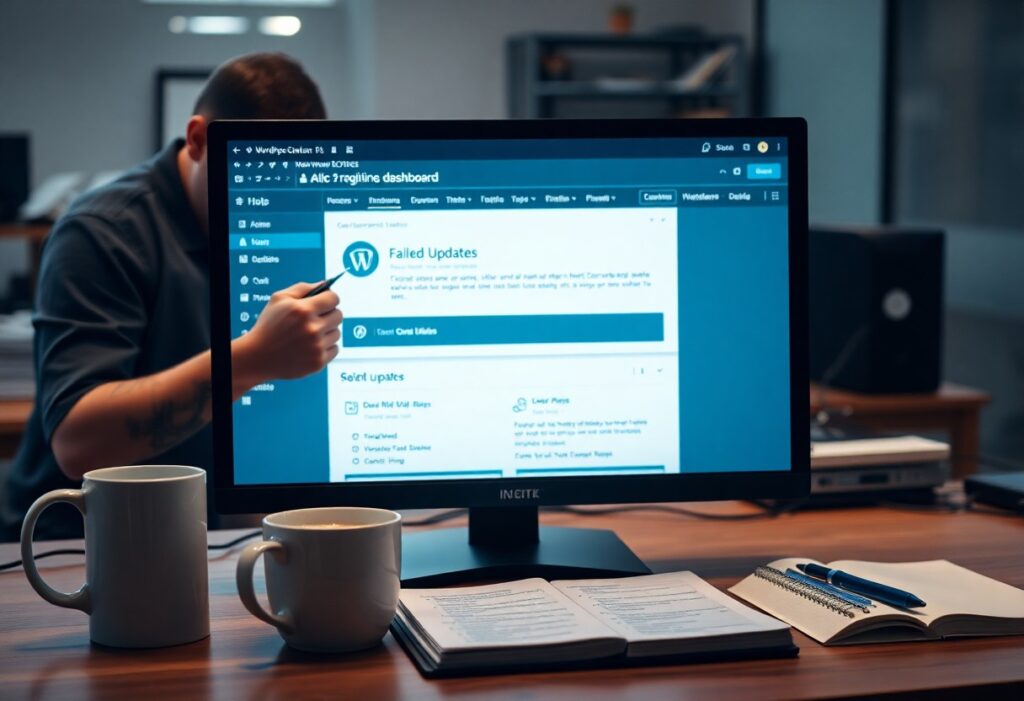Just because you’re switching hosts doesn’t mean you have to experience frustrating downtime. With the right approach, you can seamlessly transfer your WordPress site while keeping your site accessible to visitors. In this guide, you’ll learn the necessary steps to ensure a smooth migration process, minimizing disruptions and maintaining functionality. Whether you’re looking for better performance or cost savings, you can achieve a successful transition without jeopardizing your site’s availability.
Understanding Downtime
Downtime refers to the period when your website is inaccessible to users due to server issues, maintenance, or migration. For many site owners, minimizing this downtime is vital for maintaining traffic and ensuring a positive user experience during any transition between hosts.
What is Downtime?
Downtime occurs when your website is temporarily offline, rendering it unreachable for visitors. This can be caused by various factors, including server failures, maintenance work, or hosting migrations, leading to a negative impact on user experience and search engine rankings.
Why Downtime Matters for Your Website
Downtime can significantly affect your website’s reputation and performance. Users unable to access your site may turn to competitors, while search engines may penalize your rankings due to perceived instability. With studies indicating that even a few seconds of downtime can lead to lost revenue and diminished user trust, making sure your site stays online during a transition is vital.
Statistics show that e-commerce sites can lose an average of $5,600 per minute during outages. Additionally, a website that experiences repeated downtime may see a drastic drop in traffic and conversions. For example, a well-known online retailer reported a 20% increase in sales after improving their uptime from 95% to 99.9%. Such metrics underscore the importance of a seamless migration process that prioritizes continuous availability.
Preparing for Migration
Before initiating the migration process, thorough preparation is important. Start by backing up your entire WordPress site, including the database and all files. This step ensures that you have a restore point should anything go wrong during the migration. Additionally, analyze your current setup to identify any custom configurations or plugins that may require attention during the transition. Planning each stage carefully minimizes the potential for downtime.
Assessing Your Current Hosting Environment
Evaluating your current hosting environment provides insights into the resources you need for your new host. Identify your site’s traffic patterns, storage requirements, and specific functionalities important for performance. Analyzing these aspects helps you choose a provider that can support your site’s growth and ensures optimal loading speeds for visitors.
Choosing the Right New Host
Selecting the right hosting provider can significantly impact your site’s performance and reliability. Focus on factors such as server uptime, customer support, and scalability options. Look for hosts that specialize in WordPress, offering features like one-click installations, automatic backups, and robust security measures. It’s also wise to read reviews and case studies highlighting the experiences of other WordPress users. This research helps you shortlist providers that align with your technical needs and offer competitive pricing, ensuring you make an informed decision.
How to Migrate Your WordPress Site
To successfully migrate your WordPress site without downtime, follow a systematic approach. This process typically involves backing up your current website, transferring files and the database, updating configuration settings, and testing your site on the new host before finalizing the migration.
Backing Up Your Website
Start by creating a complete backup of your website, including all files and the database. Use plugins like UpdraftPlus or manual methods via FTP and phpMyAdmin to ensure you have a secure copy in case anything goes wrong during the migration.
Transferring Files and Database
Once your backup is complete, transfer your website files and database to the new host. Use an FTP client to move files and export your database using phpMyAdmin. This step ensures that all your content, themes, and plugins are included in the migration process.
The file transfer can be done efficiently by connecting to your old host via FTP and downloading all WordPress files to your local computer. After this, upload these files to your new host. For the database, export it as an SQL file from phpMyAdmin and import it into the new server’s database, ensuring you maintain the correct user privileges and database settings to avoid connectivity issues.
DNS Configuration Tips
Accurate DNS configuration is vital for a smooth migration. Follow these steps to ensure success:
- Use your new host’s DNS records.
- Double-check nameservers and A records.
- Consider using a temporary URL for testing.
- Be prepared for potential caching issues.
Recognizing the importance of these configurations can greatly reduce downtime during your migration.
Updating Your Domain’s DNS Settings
To update your domain’s DNS settings, access your domain registrar’s control panel. Input the new nameservers provided by your hosting provider, ensuring accuracy. If you’re using A records, update these to point to your new server’s IP address. Be thorough in this process to avoid misdirecting your traffic.
Propagation Time and Its Impact
Propagation time refers to the period it takes for DNS changes to be updated across the internet. This can vary significantly, typically ranging from a few hours to 48 hours. During this time, some users might be directed to the old host while others reach the new one, which can lead to inconsistent access.
Propagation time influences your site’s accessibility as it transitions from the old host to the new one. Keeping track of this timeframe is vital, as visitors may experience different site versions based on their geographic location and ISP. To minimize confusion, you can inform users of potential access issues during this period. Additionally, monitoring your site’s performance and using caching tools can help manage any discrepancies until complete propagation is achieved.
Testing Your Site on the New Host
After migrating your site files and database, it’s time to test the new host. Access your site using a temporary URL or by editing your local hosts file to point your domain to the new server’s IP. Navigate through your site, checking pages, posts, and functionalities. This step ensures your settings, plugins, and themes are correctly configured and working as intended before you finalize the migration.
Ensuring Everything Works Perfectly
Verify all elements of your site function as expected, including links, images, and forms. Pay special attention to any dynamic features like e-commerce capabilities or interactive plugins. Conduct tests on different devices and browsers to catch any discrepancies that might affect user experience. This meticulousness will prevent issues once your site transitions entirely.
Troubleshooting Common Issues
Even with careful preparation, you might encounter some issues during the testing phase. Look out for broken links, missing images, or issues with plugins not functioning correctly. Review error logs and your WordPress dashboard for any warning messages that can give insights into potential problems. Identifying these on the new host will help troubleshoot effectively before going live.
For example, if you notice broken links, confirm that your database references have been updated to the new host’s URL. Sometimes, a simple permalinks reset in the WordPress settings can resolve link issues. If a plugin is misbehaving, look for updates or compatibility issues since some plugins might not work smoothly in a new environment immediately. Utilize tools like the WordPress Debugging feature to pinpoint and fix errors systematically.
Going Live with the New Host
Once testing is completed and everything functions as expected, you’ll switch your domain to point to the new host. This involves updating your domain’s DNS settings to direct traffic to the new server. DNS changes might take time to propagate, but proper planning can ensure that the majority of your visitors experience minimal disruption during this transition.
Final Checks Before Switching
Perform a series of final checks to verify that all aspects of your site operate smoothly on the new host. Confirm that all plugins are functional, images are loading correctly, and forms are working as intended. Check for broken links and ensure that the site’s performance meets your expectations before making the switch.
Monitoring Post-Migration Performance
After going live, actively monitor your site to catch any issues arising from the migration. Tools like Google Analytics or monitoring services can help track your site’s performance, load times, and user interactions. This vigilance allows you to address problems swiftly and ensure a seamless experience for your visitors.
In the days following your migration, focus on specific metrics such as page load speed and error rates. Analyzing visitor behavior can help identify any potential problems early on. If you notice significant drops in traffic or performance, consider rechecking your DNS settings and server configurations. Regularly monitoring will enable you to respond quickly to any necessary adjustments, ensuring your audience experiences a stable and efficient website.
Summing up
Drawing together the key points, you can migrate your WordPress site to a new host without downtime by carefully following a structured process. Begin by backing up your site and setting up the new host, then utilize tools like a staging site and DNS management to ensure a seamless transition. By doing so, you maintain continuous access for your users while transferring your content. This strategic approach allows you to enhance your hosting experience with minimal interruption to your site’s availability.
FAQ
Q: Can I migrate my WordPress site to a new host without downtime?
A: Yes, you can migrate your WordPress site with minimal to no downtime by following the correct steps to replicate your site before switching DNS settings.
Q: What are the initial steps for migrating my WordPress site?
A: First, backup your WordPress files and database on your current host. Then, set up your new hosting account and install WordPress.
Q: How do I transfer my files to the new host?
A: Use an FTP client to upload your WordPress files from the backup to the new host. Ensure all plugins, themes, and media files are transferred.
Q: How do I migrate the database to the new host?
A: Export your current database using phpMyAdmin, then import it into the new host’s database using the phpMyAdmin tool available in your new hosting account.
Q: What must I change after transferring files and the database?
A: Update the wp-config.php file on your new host with the new database details, including database name, username, and password.
Q: How can I minimize downtime during the DNS switch?
A: Change your DNS settings to point to the new host after the full migration is complete. You can lower the TTL settings on your DNS records ahead of time for faster propagation.
Q: Will my SEO be affected during this migration process?
A: If done properly, your SEO should remain unaffected. Ensure URLs remain the same and monitor site performance post-migration to address any issues immediately.



